It looks like you're using an Ad Blocker.
Please white-list or disable AboveTopSecret.com in your ad-blocking tool.
Thank you.
Some features of ATS will be disabled while you continue to use an ad-blocker.
14
share:
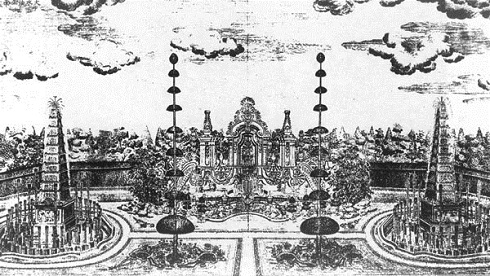
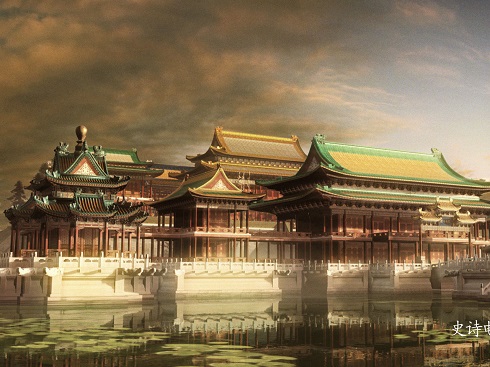

"The Old Summer Palace, known in Chinese as Yuan Ming Yuan (the Gardens of Perfect Brightness), and originally called the Imperial Gardens, was a complex of palaces and gardens in Beijing. It is located 8 kilometres (5.0 mi) northwest of the walls of the Imperial City and was built in the 18th and early 19th century...In 1860 during the Second Opium War, two British envoys, a journalist for The Times and their small escort of British and Indian troopers met with the Royal Prince under a flag of truce to negotiate. They were imprisoned and tortured, resulting in twenty deaths.The British High Commissioner to China, Lord Elgin, retaliated by ordering the destruction of the palace, which was then carried out by British and French troops."
Source:
The Old Summer Palace (wiki)
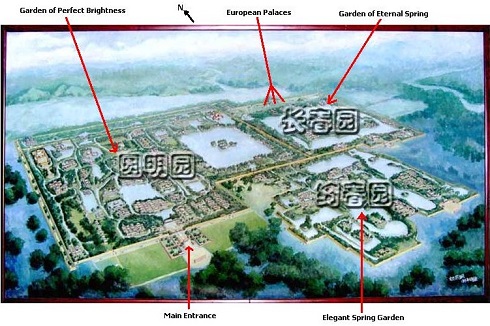
Yuanminguan has been called the "garden of gardens" and it is said that its beauty was "beyond description." It was five times the size of Beijing's famed Forbidden City, and was a popular retreat for the late Qing Dynasty Imperial elites in the hot summer months.
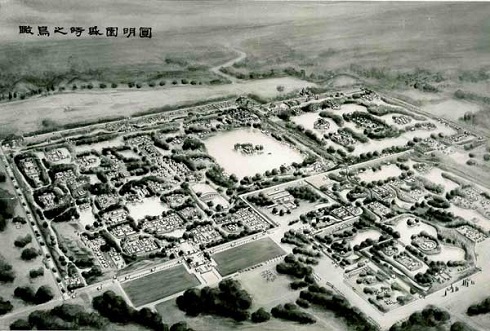
"Yuanmingyuan is composed of three comparatively independent but interconnected gardens: Yuanmingyuan, Changchunyuan (Garden of Eternal Spring), and Qichunyuan (Garden of Blossoming Spring). Covering an area of about 350 hectares, Yuanmingyuan was a vast landscaped garden at once grand in scale and enchanting in scenery. Its green hills and exquisite architecture were laid out with picturesque appeal, and decorated with thriving trees and beautiful flowers. As to close sights, the rolling hills and maze of streams and lakes divided the whole garden into more than 100 scenes, their captivating beauty enhanced by a host of pavilions, corridors, islands, and bridges. About 40 percent of the garden was covered by rivers and lakes, connected into an integral system by winding streams and dotted with more than 250 hills and rock formations. The water's constant murmur rendered life and soul to the hills and rocks. And together they transformed the entire complex into a landscaping and horticultural miracle which stood comparison with the beauty of the natural scenery south of the Yangtze River."
Source:
Yuanmingyuan Park
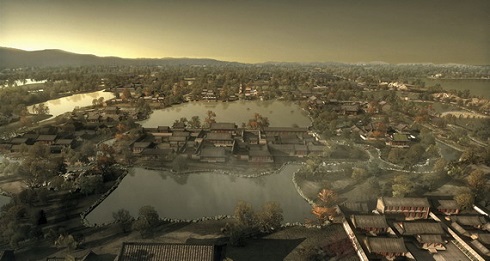
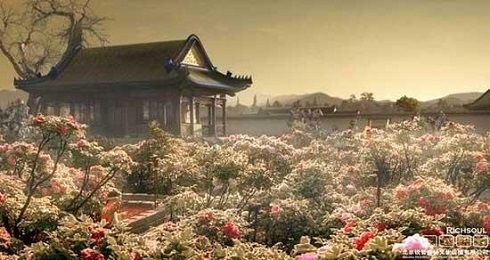
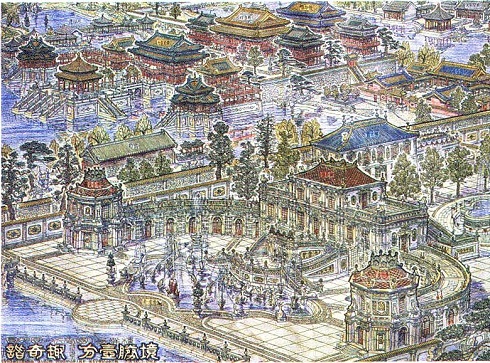
One point I find particularly interesting about the complex is that in addition to the classical Chinese architecture and gardens one would expect, it contained a number of buldings based on 18th-century European palace style buildings and features. This Western-style area was called "Xiyang Lou", and was built for the Qianlong emperor by two Jesuits named Giuseppe Castiglione and Michel Benoist. The Emperor considered European architecture exotic and fascinating, and the styles employed would have been unknown to most Chinese at the time.
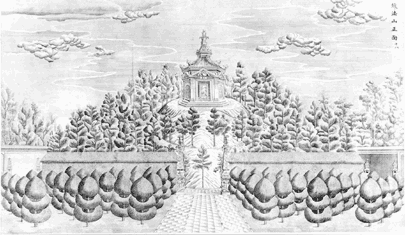
"These European-style palaces and gardens were a testament to the extravagant tastes of the Qianlong emperor. In today’s language, we would say that everything was “over the top.”...A present-day art historian notes, “The final vision of a series of architectural tableaux bears little relation to any European garden. It was an entirely original arrangement of structures to form a theme park where printed and painted images of the West were translated into a three-dimensional reality.” 4 The European section of the Yuanmingyuan was perhaps the first theme-park in China, or worldwide, but only the emperor and his immediate court could play in it."
Source:
Yuanmingyuan Park
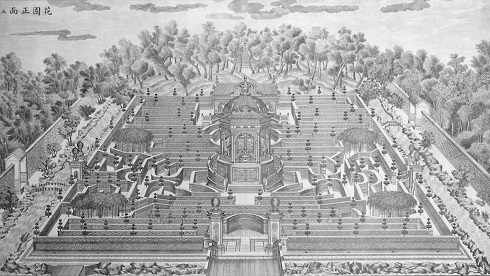

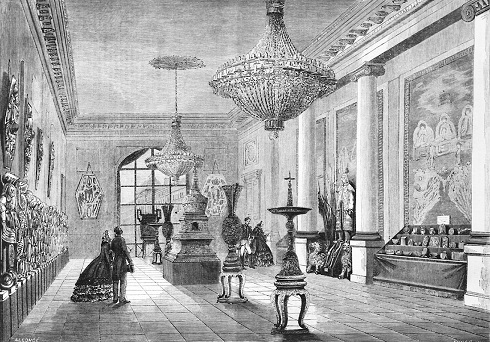
edit on 7/26/2014 by KarensHoliday because: (no reason given)
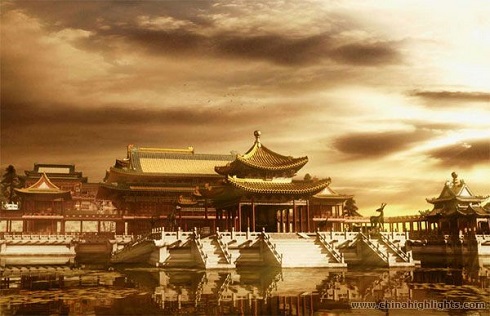
Here are a few YouTube clips to give you an idea of what Yuanmingyuan might have looked like at its peak of glory.
edit on 7/26/2014 by KarensHoliday because: (no reason given)
In addition to the architectural splendor and the enormity of the grounds, Yuanmngyuan was filled with a mind-boggling array of treasures, gold,
priceless artifacts, and wealth.

"The European palaces contain only European ornaments and furniture. It is unbelievable how rich this sovereign is in curiosities and magnificent objects of all kinds from the occident. You ask me if the Emperor has any Venetian and French glass. Thirty years ago he already had so many pieces that, not knowing where to put them, he had a quantity of the first grade broken up to make window panes for his European buildings.
In the hall which he had made new for the tapestries of the manufacture of Gobelins, which the French court sent in 1767, there are many pier glasses. You see, this hall, 70 feet long and of good width proportionally, is so full of machines that one can hardly move about in it...the work on them is exquisite and they are enriched with innumerable precious stones"
-Father François Bourgeois, 1786

Very little remains of Yuanmngyuan today, but more hints at the splendor of the wealth there can be gained from accounts of the looting that took place when the Western powers sacked the complex.
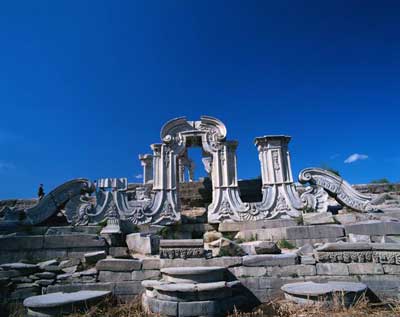
"The rooms and halls of audience... and specially the Emperor’s bedroom, were literally crammed with the most lovely knick-knacks you can conceive.... Large magazines full of richly ornamented robes lined with costly furs, such as ermine and sable, were ruthlessly pulled from their shelves, and those that did not please the eye, thrown aside and trampled under foot. There were large storerooms full of fans. Mandarins’ hats, and clothes of every description, others again piled up to the ceiling with rolls of silk, all embroidered, and to an incredible amount.... All these were plundered and pulled to pieces, floors were literally covered with fur robes, jade ornaments, porcelain, sweetmeats, and beautiful wood carvings."
-Stephenson, Frederick, "At Home and On the Battlefield" (London, 1915), pp. 272-273, quoted in Hevia, p. 79.
"We accordingly went out, and after pillaging it, burned the whole place, destroying in a Vandal-like manner most valuable property, which would not be replaced...You can scarcely imagine the beauty and magnificence of the places we burnt. It made one’s heart sore to burn them; in fact these palaces were so large, and we were so pressed for time, that we could not plunder them carefully. Quantities of gold ornaments were burnt, considered as brass. It was wretchedly demoralizing work for an army. Everybody was wild for plunder"
Boulger, D. C., as quoted in Malone, Carroll Brown, "History of the Summer Palaces under the Ch’ing Dynasty" (Urbana: University of Illinois, 1934), pp. 187-88.
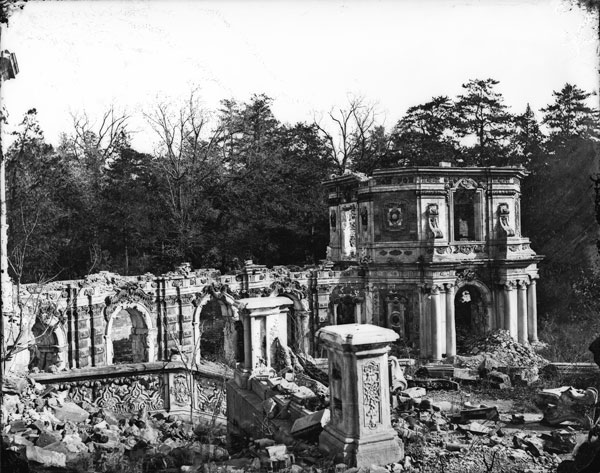

"The European palaces contain only European ornaments and furniture. It is unbelievable how rich this sovereign is in curiosities and magnificent objects of all kinds from the occident. You ask me if the Emperor has any Venetian and French glass. Thirty years ago he already had so many pieces that, not knowing where to put them, he had a quantity of the first grade broken up to make window panes for his European buildings.
In the hall which he had made new for the tapestries of the manufacture of Gobelins, which the French court sent in 1767, there are many pier glasses. You see, this hall, 70 feet long and of good width proportionally, is so full of machines that one can hardly move about in it...the work on them is exquisite and they are enriched with innumerable precious stones"
-Father François Bourgeois, 1786

Very little remains of Yuanmngyuan today, but more hints at the splendor of the wealth there can be gained from accounts of the looting that took place when the Western powers sacked the complex.

"The rooms and halls of audience... and specially the Emperor’s bedroom, were literally crammed with the most lovely knick-knacks you can conceive.... Large magazines full of richly ornamented robes lined with costly furs, such as ermine and sable, were ruthlessly pulled from their shelves, and those that did not please the eye, thrown aside and trampled under foot. There were large storerooms full of fans. Mandarins’ hats, and clothes of every description, others again piled up to the ceiling with rolls of silk, all embroidered, and to an incredible amount.... All these were plundered and pulled to pieces, floors were literally covered with fur robes, jade ornaments, porcelain, sweetmeats, and beautiful wood carvings."
-Stephenson, Frederick, "At Home and On the Battlefield" (London, 1915), pp. 272-273, quoted in Hevia, p. 79.
"We accordingly went out, and after pillaging it, burned the whole place, destroying in a Vandal-like manner most valuable property, which would not be replaced...You can scarcely imagine the beauty and magnificence of the places we burnt. It made one’s heart sore to burn them; in fact these palaces were so large, and we were so pressed for time, that we could not plunder them carefully. Quantities of gold ornaments were burnt, considered as brass. It was wretchedly demoralizing work for an army. Everybody was wild for plunder"
Boulger, D. C., as quoted in Malone, Carroll Brown, "History of the Summer Palaces under the Ch’ing Dynasty" (Urbana: University of Illinois, 1934), pp. 187-88.

edit on 7/26/2014 by KarensHoliday because: (no reason given)
S&F
Wow Just Wow!
Awesome post!
Thanks, never knew of this before now.
Wow Just Wow!
Awesome post!
Thanks, never knew of this before now.
Really great info, pics and vids.
It just goes to show you how easily magnificent things can vanish and be forgotten. If, heaven forbid, there was an attack on one of the world's marvels of luxury and spendor, would people even remember in 50 or a hundred years?
The amount of art and culture that had been lost in Asia in particular is mind-boggling, and it's not just the cliche of "evil whitie stealing from the righteous natives." I hope people can see beyond that because the worst atrocities in that part of the world have been Asian vs Asian. The Japanese looted and obliterated much of Korean culture in the early 20th century. The Chinese did a lot of their own cultural annihilation...especially with Mao and communism but also at the hands of the Japanese. Meanwhile the Japanese lost incalculable splendor in the Tokyo firebombings.
In some way all of human culture is as ephemeral as a soap-bubble. Magnificent things like the gardens described here take hundreds of years to create and only days or weeks to annihilate forever. Who knows what has been lost? We see only the tip of the iceberg . It's still fun to speculate. I can only imagine what it feels to have access to that much luxury and beauty. The closest thing I can think of in the West is Versalilles, but these gardens are like Versalles times ten. Humanity never ceases to amaze and blow the mind.
It just goes to show you how easily magnificent things can vanish and be forgotten. If, heaven forbid, there was an attack on one of the world's marvels of luxury and spendor, would people even remember in 50 or a hundred years?
The amount of art and culture that had been lost in Asia in particular is mind-boggling, and it's not just the cliche of "evil whitie stealing from the righteous natives." I hope people can see beyond that because the worst atrocities in that part of the world have been Asian vs Asian. The Japanese looted and obliterated much of Korean culture in the early 20th century. The Chinese did a lot of their own cultural annihilation...especially with Mao and communism but also at the hands of the Japanese. Meanwhile the Japanese lost incalculable splendor in the Tokyo firebombings.
In some way all of human culture is as ephemeral as a soap-bubble. Magnificent things like the gardens described here take hundreds of years to create and only days or weeks to annihilate forever. Who knows what has been lost? We see only the tip of the iceberg . It's still fun to speculate. I can only imagine what it feels to have access to that much luxury and beauty. The closest thing I can think of in the West is Versalilles, but these gardens are like Versalles times ten. Humanity never ceases to amaze and blow the mind.
originally posted by: TheXoor
In some way all of human culture is as ephemeral as a soap-bubble. Magnificent things like the gardens described here take hundreds of years to create and only days or weeks to annihilate forever. Who knows what has been lost? We see only the tip of the iceberg .
"I met a traveller from an antique land
Who said: "Two vast and trunkless legs of stone
Stand in the desert. Near them, on the sand,
Half sunk, a shattered visage lies, whose frown,
And wrinkled lip, and sneer of cold command,
Tell that its sculptor well those passions read
Which yet survive, stamped on these lifeless things,
The hand that mocked them and the heart that fed:
And on the pedestal these words appear:
'My name is Ozymandias, king of kings:
Look on my works, ye Mighty, and despair!'
Nothing beside remains. Round the decay
Of that colossal wreck, boundless and bare
The lone and level sands stretch far away."
-Percy Bysshe Shelley, Ozymandias, 1818
edit on 7/31/2014 by KarensHoliday because: (no reason given)
new topics
-
SCOTUS Chief Justice JOHN ROBERTS Ends 2024 Describing His Fears for Safety of U.S. Judges.
Above Politics: 35 minutes ago -
How we've changed in 100 years
Ancient & Lost Civilizations: 7 hours ago -
US disburses $3.4 billion in budget aid for Ukraine, Yellen says
US Political Madness: 8 hours ago -
Nigel Farage's New Year Message.
Politicians & People: 9 hours ago -
I dont understand what i just witnessed
Social Issues and Civil Unrest: 11 hours ago
top topics
-
I dont understand what i just witnessed
Social Issues and Civil Unrest: 11 hours ago, 11 flags -
US disburses $3.4 billion in budget aid for Ukraine, Yellen says
US Political Madness: 8 hours ago, 11 flags -
Happy New Year from Aussie
General Chit Chat: 14 hours ago, 8 flags -
How we've changed in 100 years
Ancient & Lost Civilizations: 7 hours ago, 8 flags -
Nigel Farage's New Year Message.
Politicians & People: 9 hours ago, 6 flags -
House republicans prove to be drama queens
US Political Madness: 14 hours ago, 5 flags -
The Silent Motion…
Short Stories: 13 hours ago, 5 flags -
SCOTUS Chief Justice JOHN ROBERTS Ends 2024 Describing His Fears for Safety of U.S. Judges.
Above Politics: 35 minutes ago, 2 flags
14
